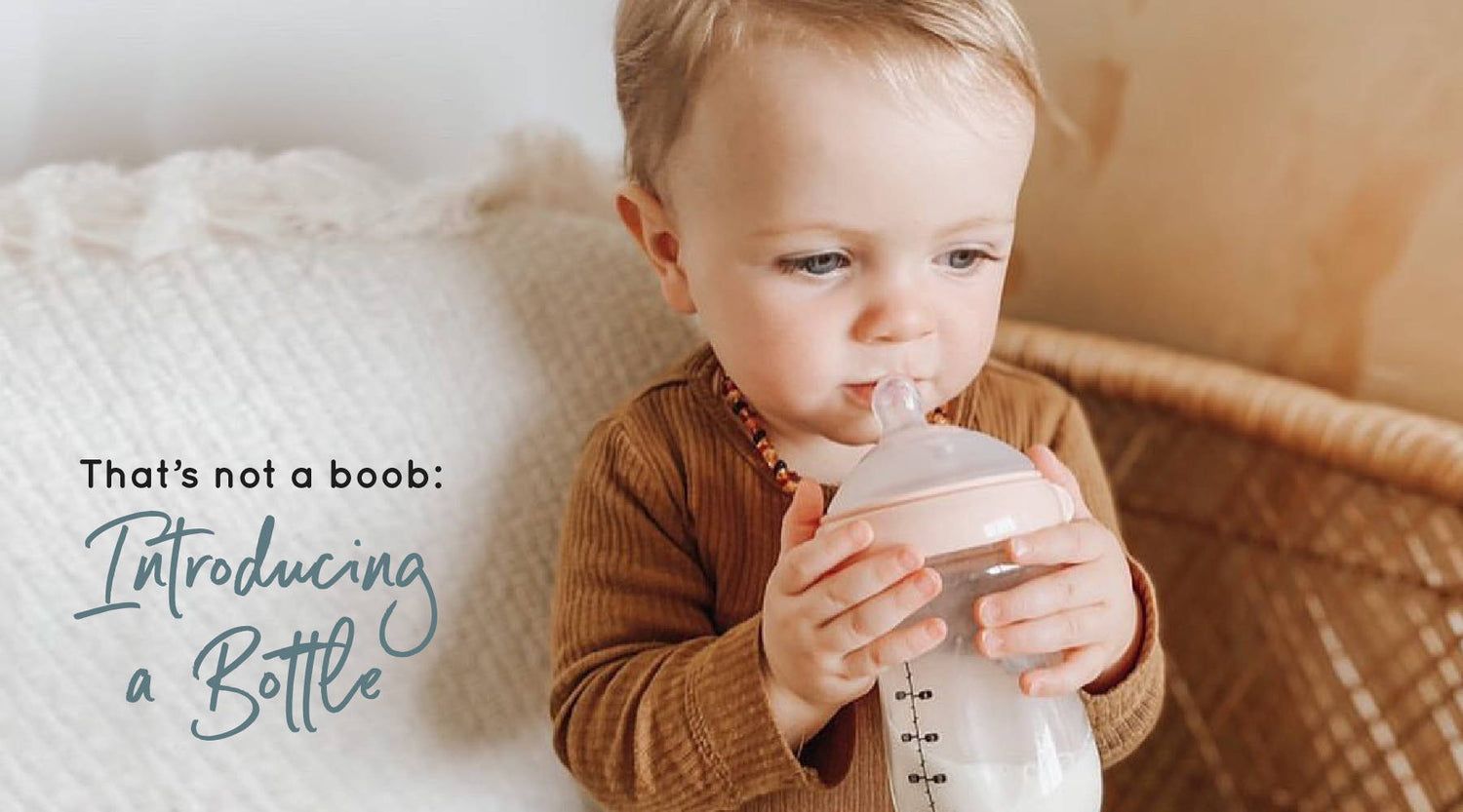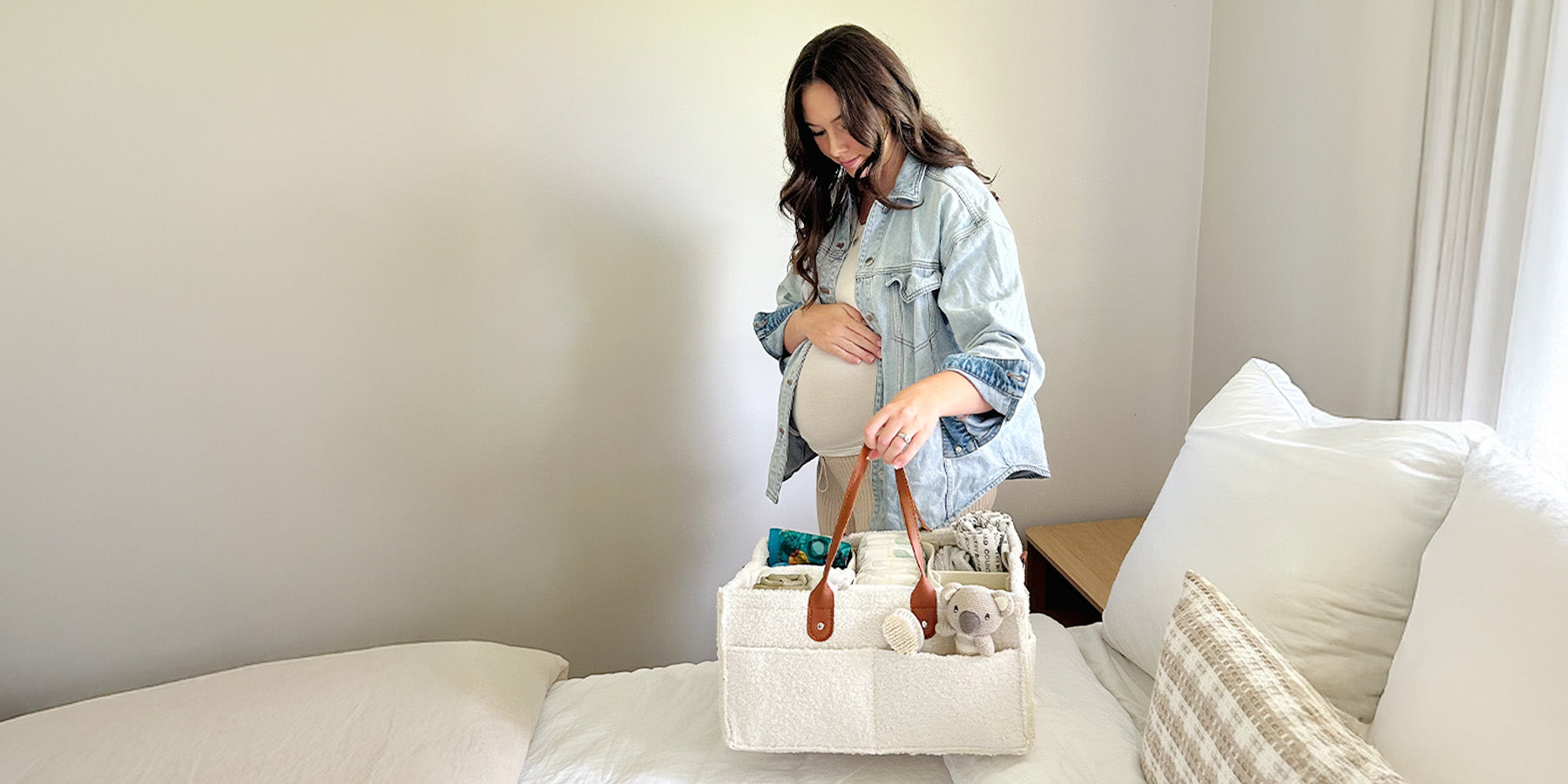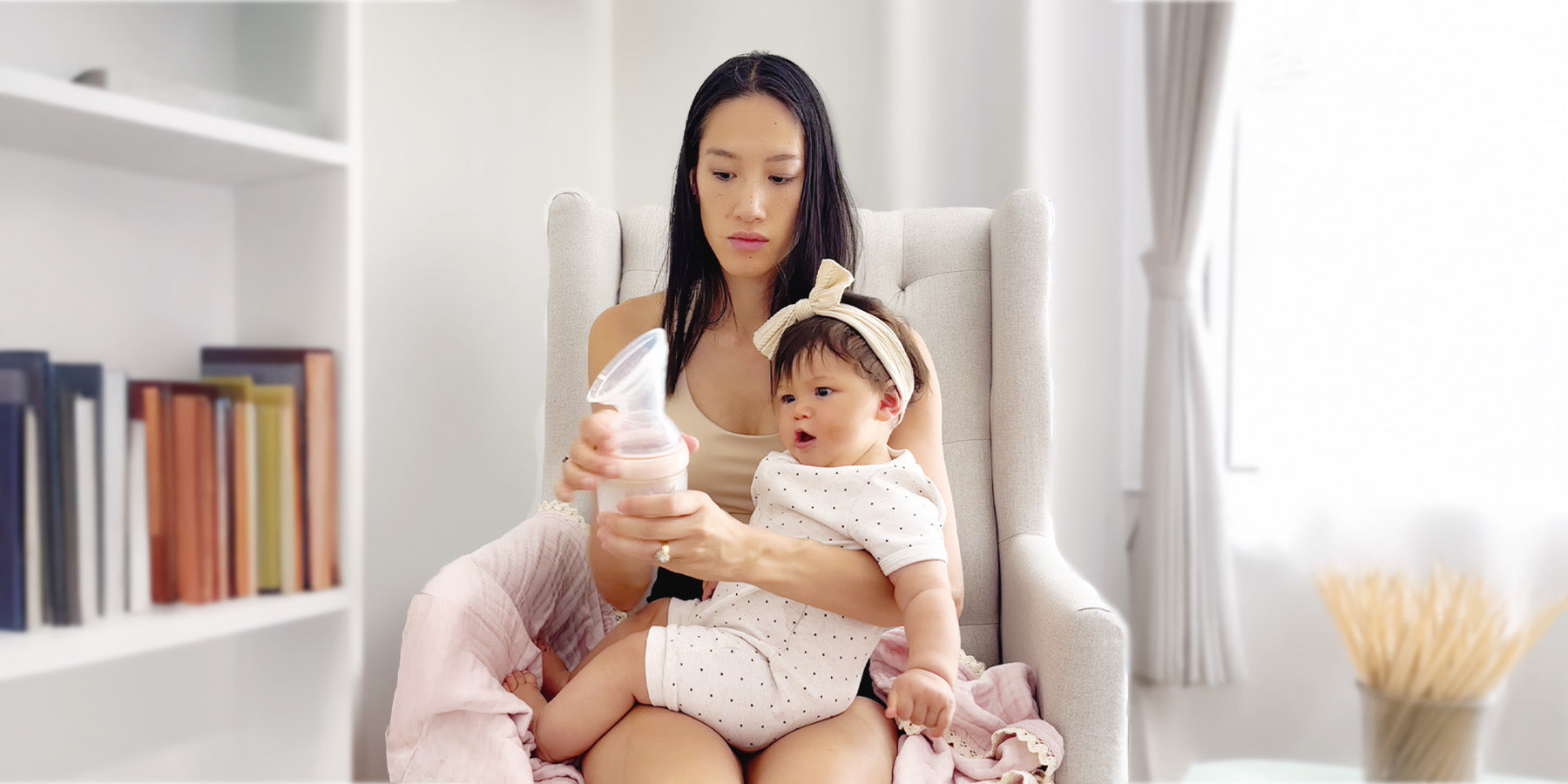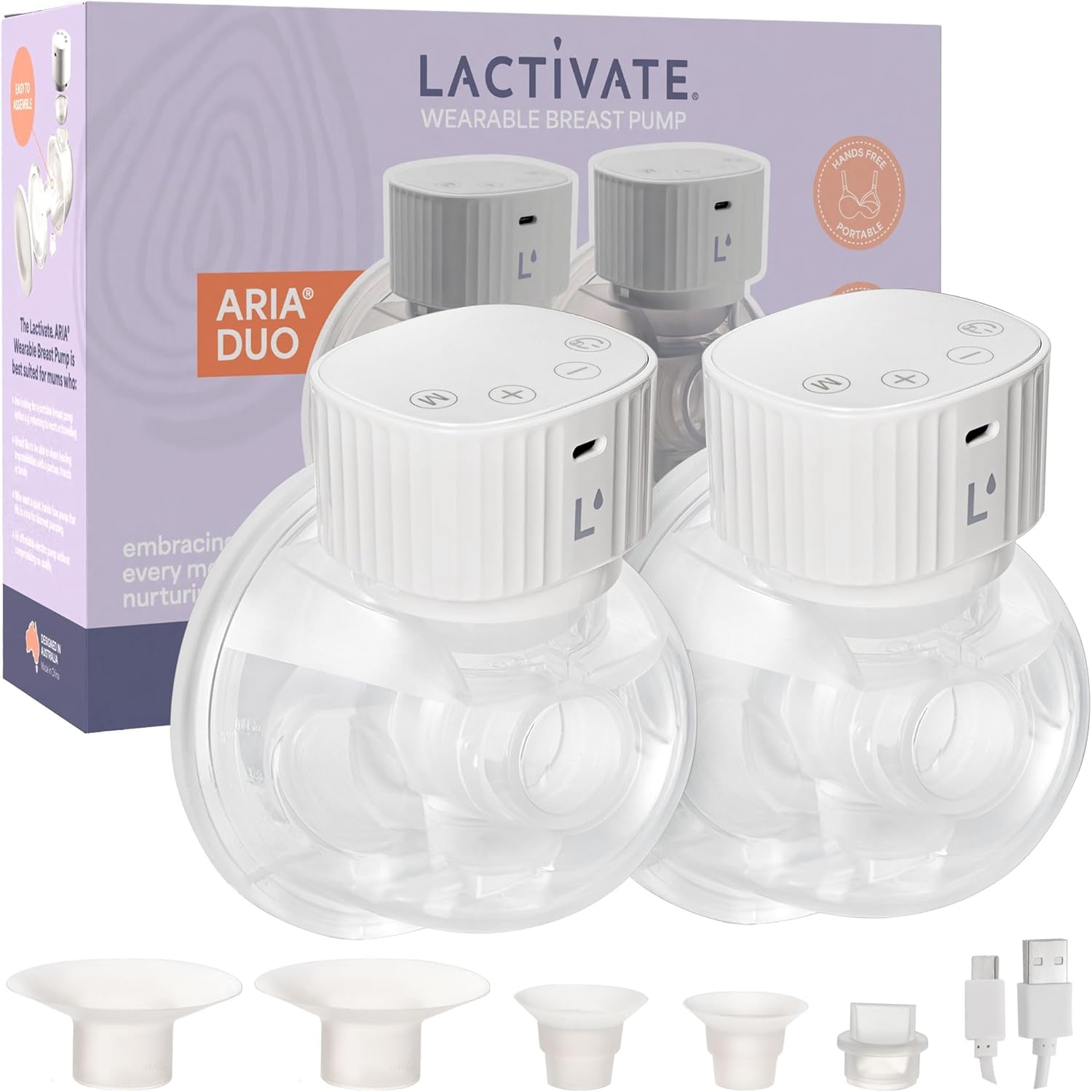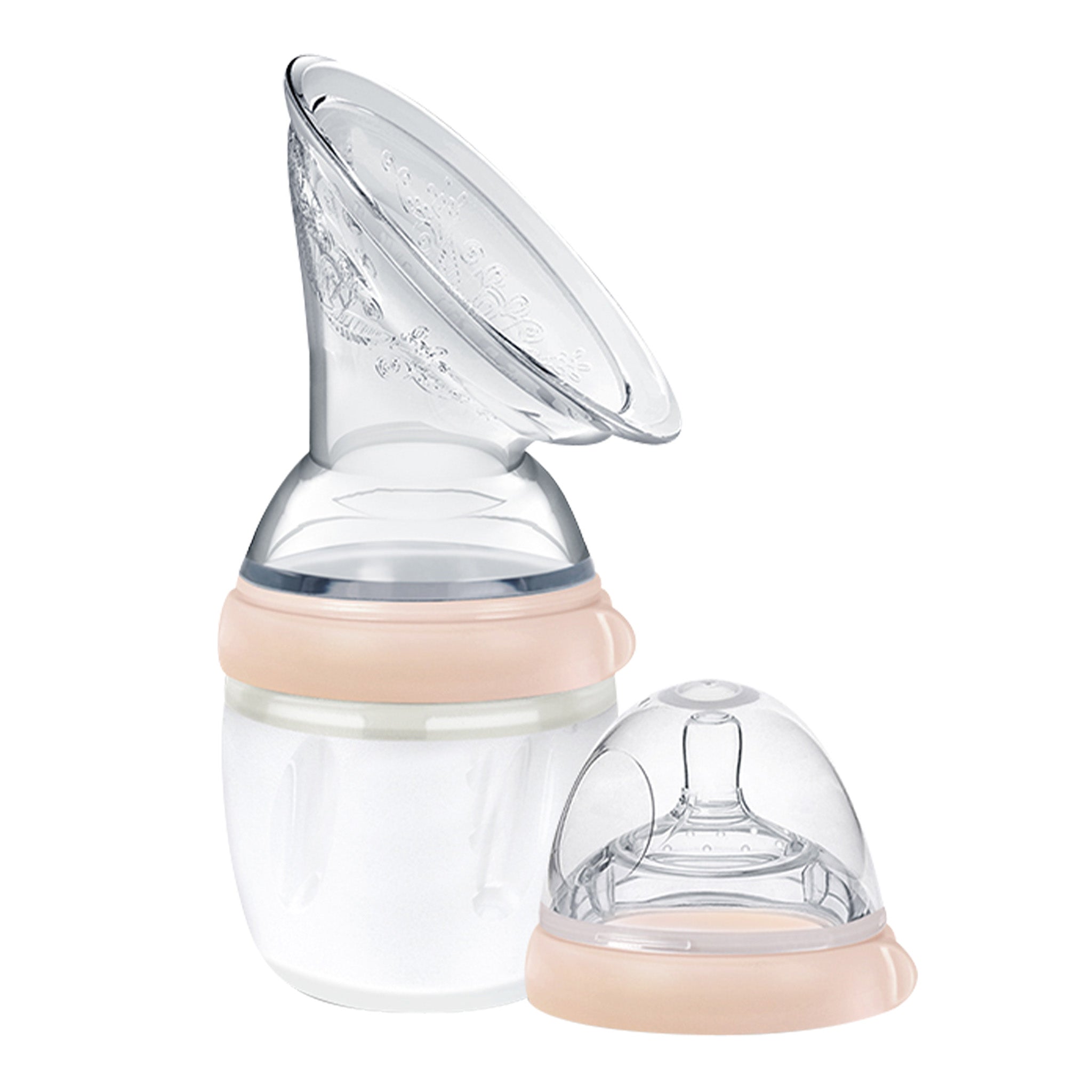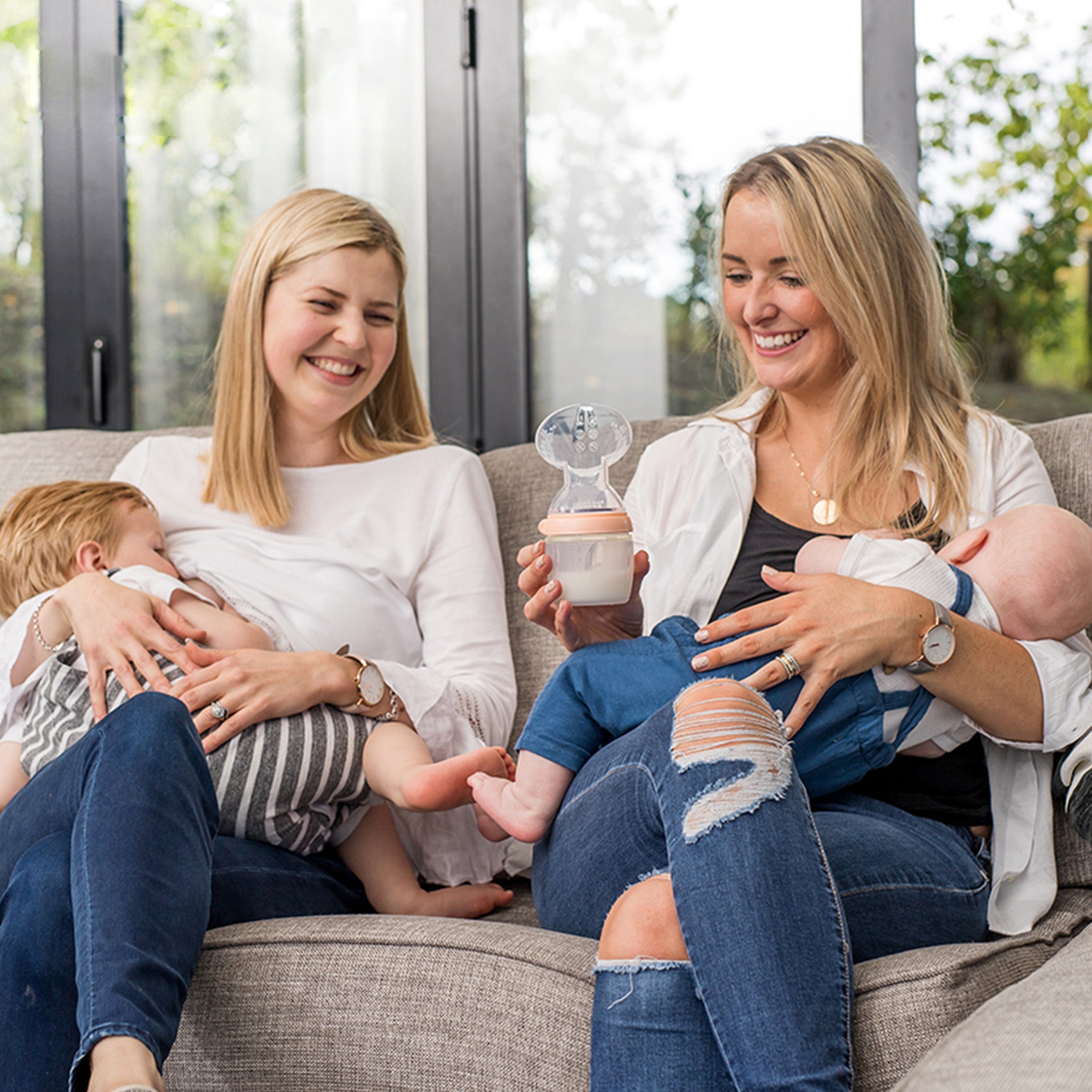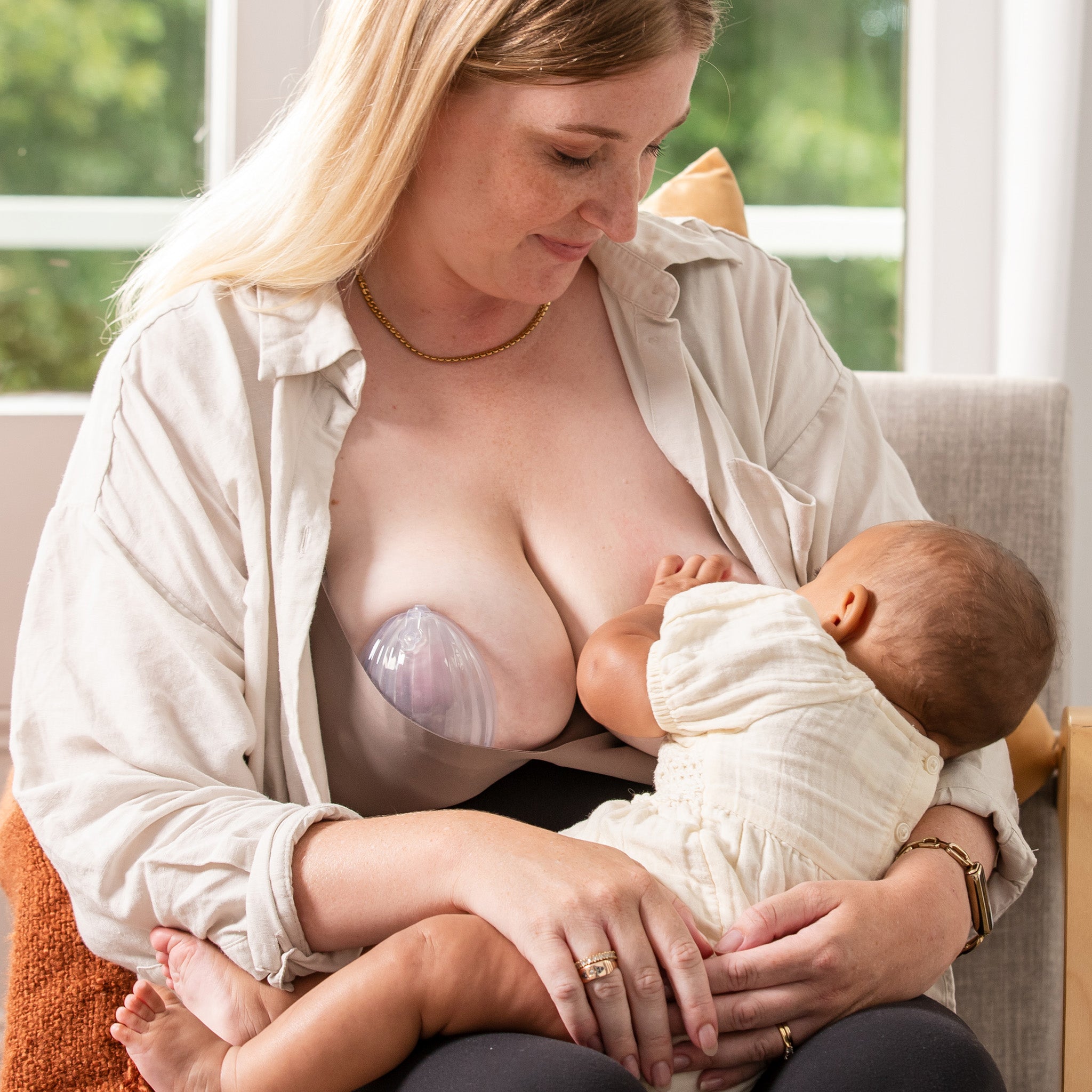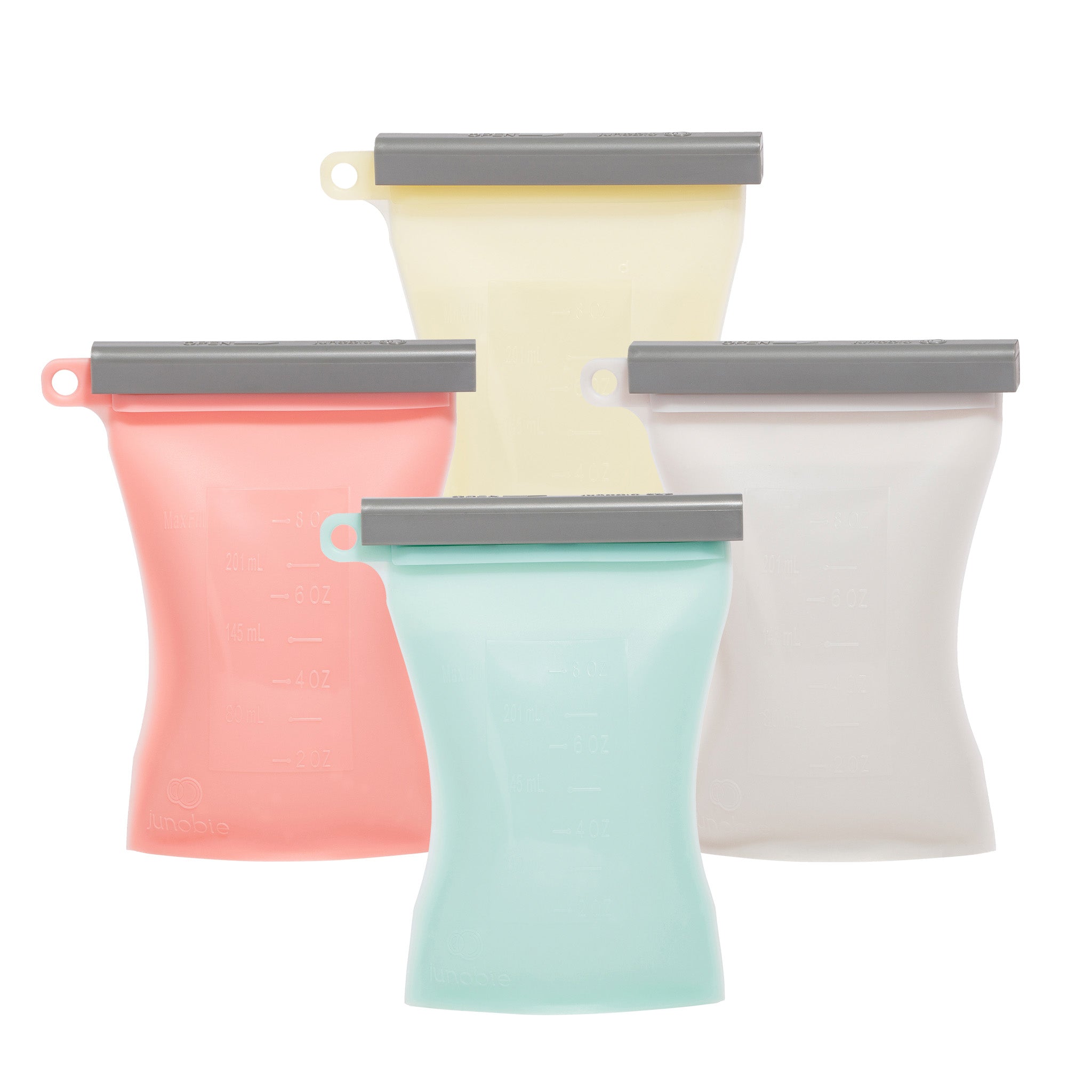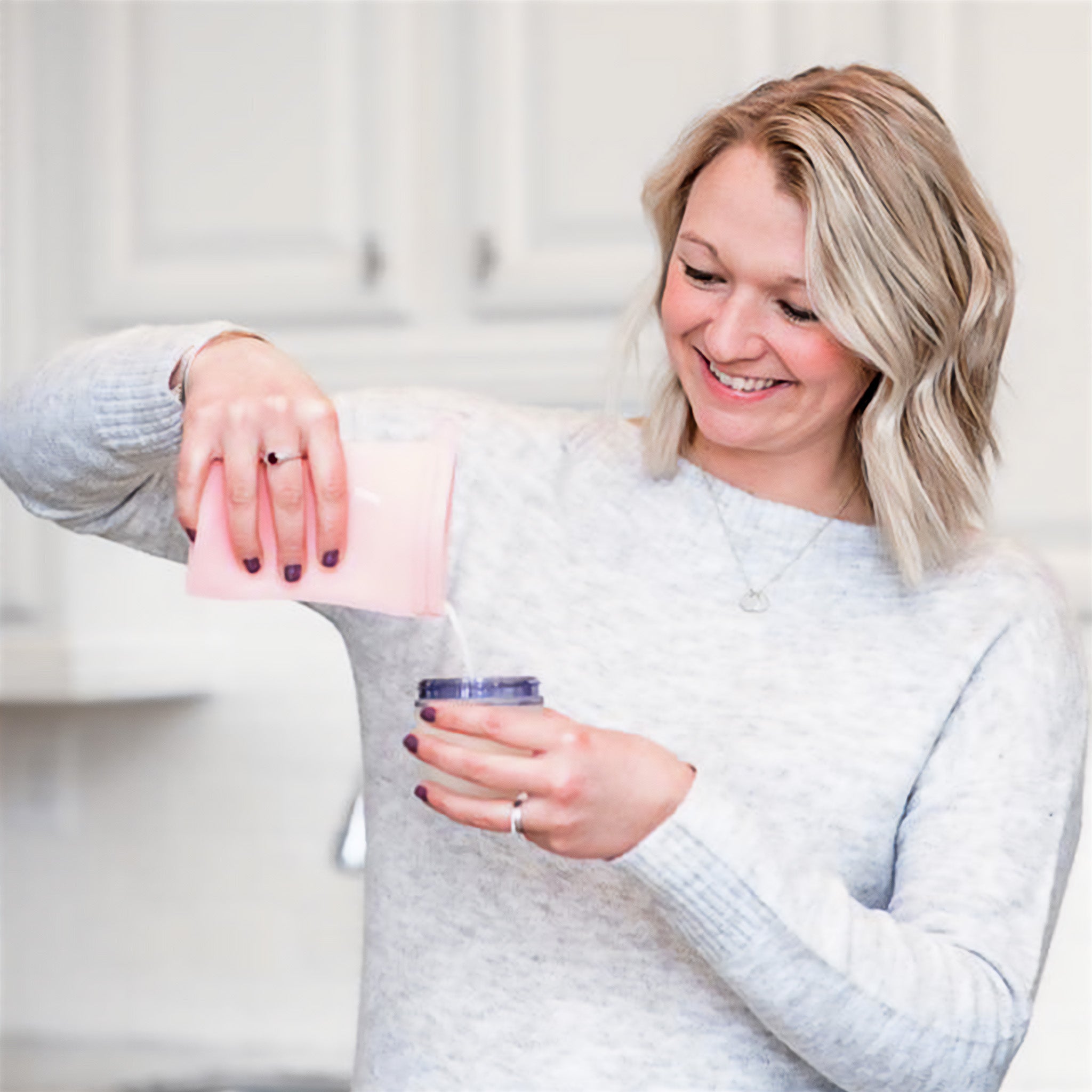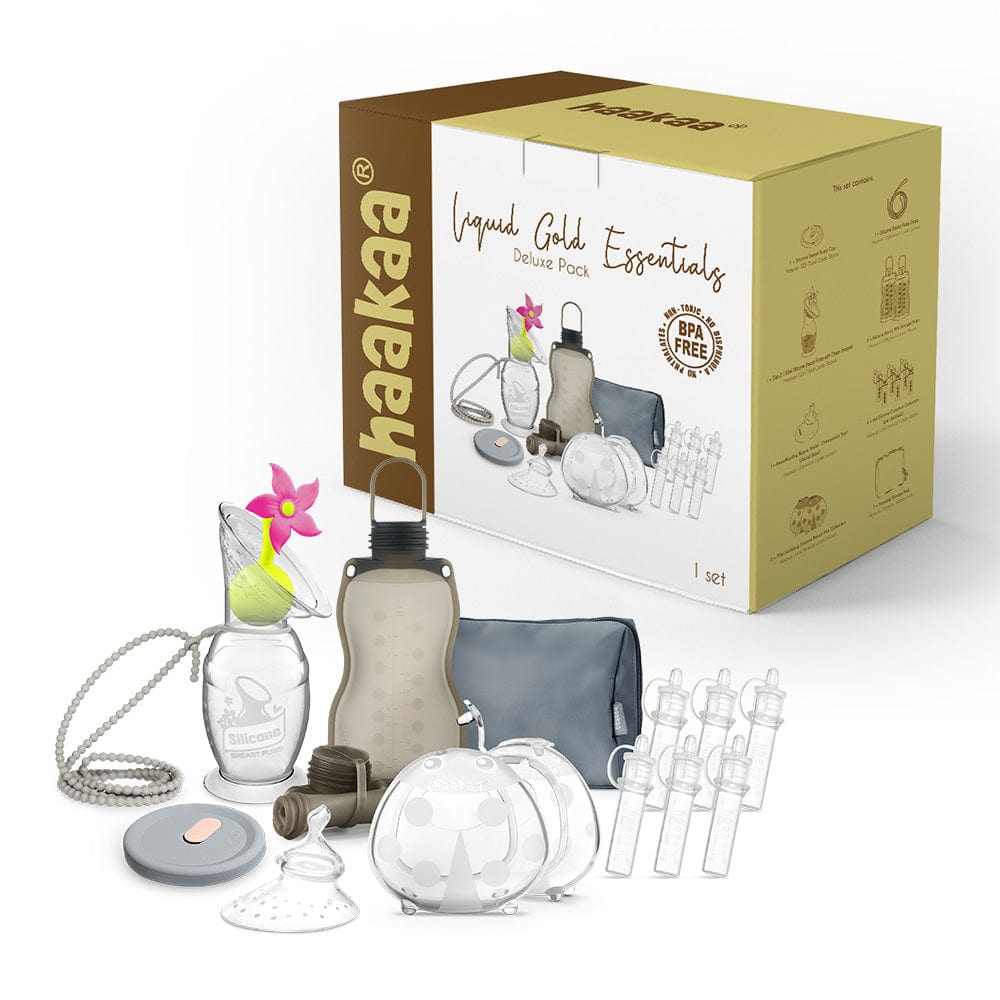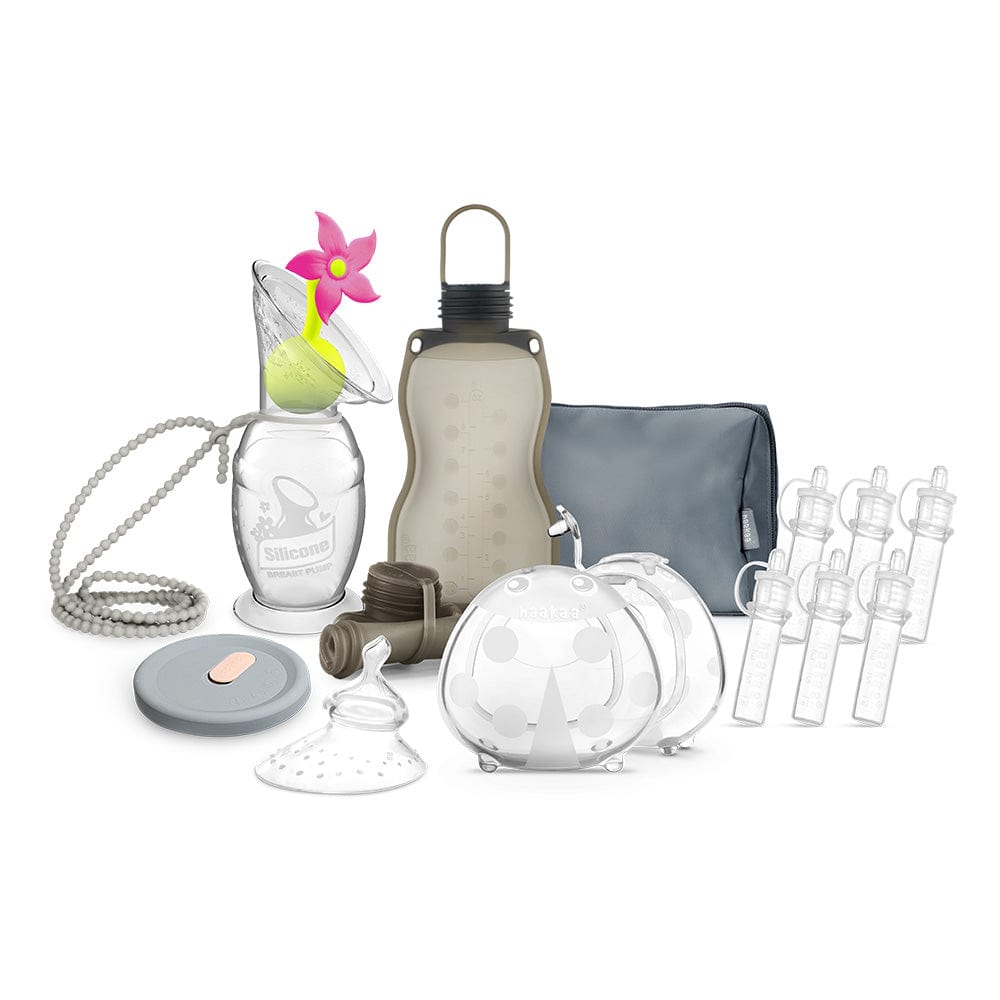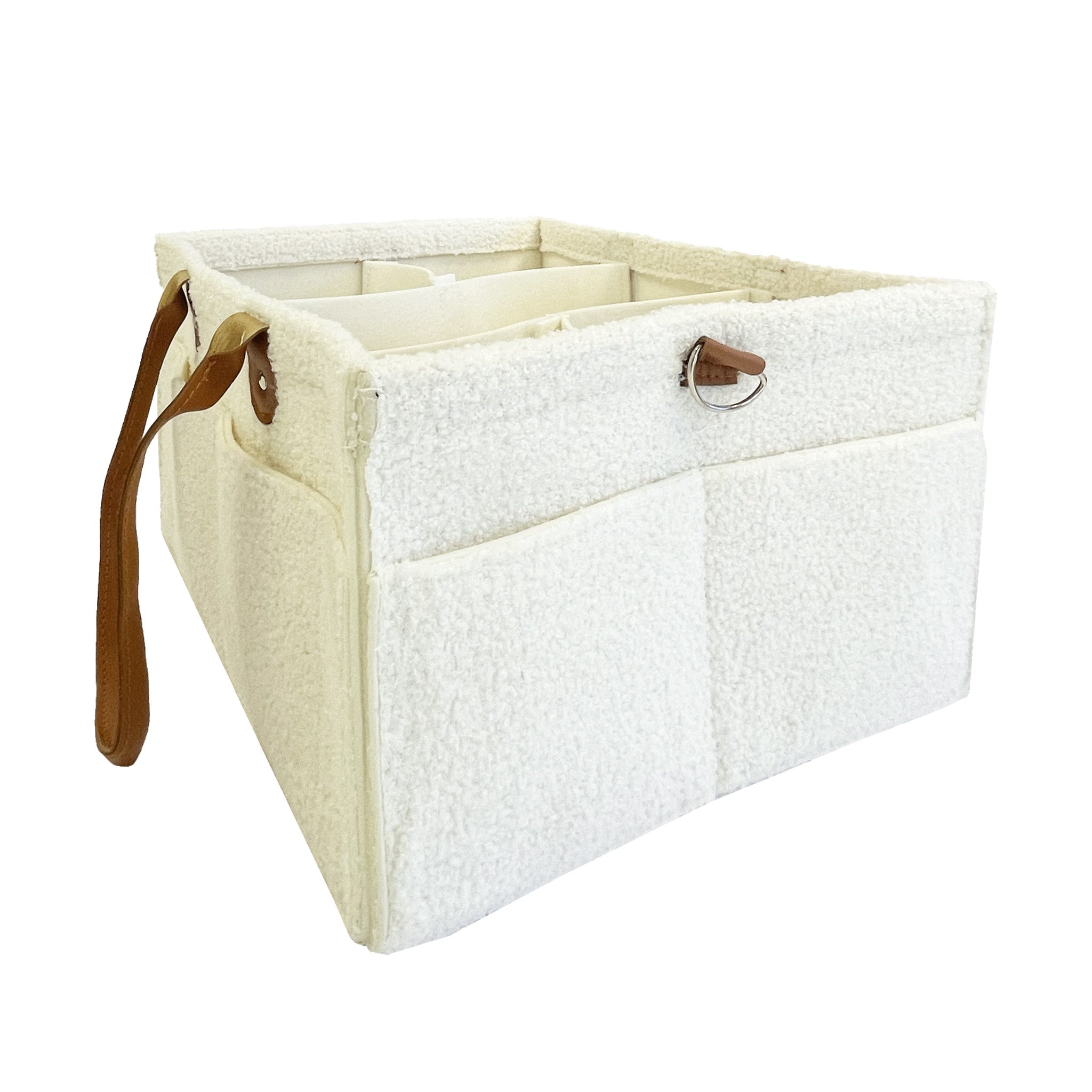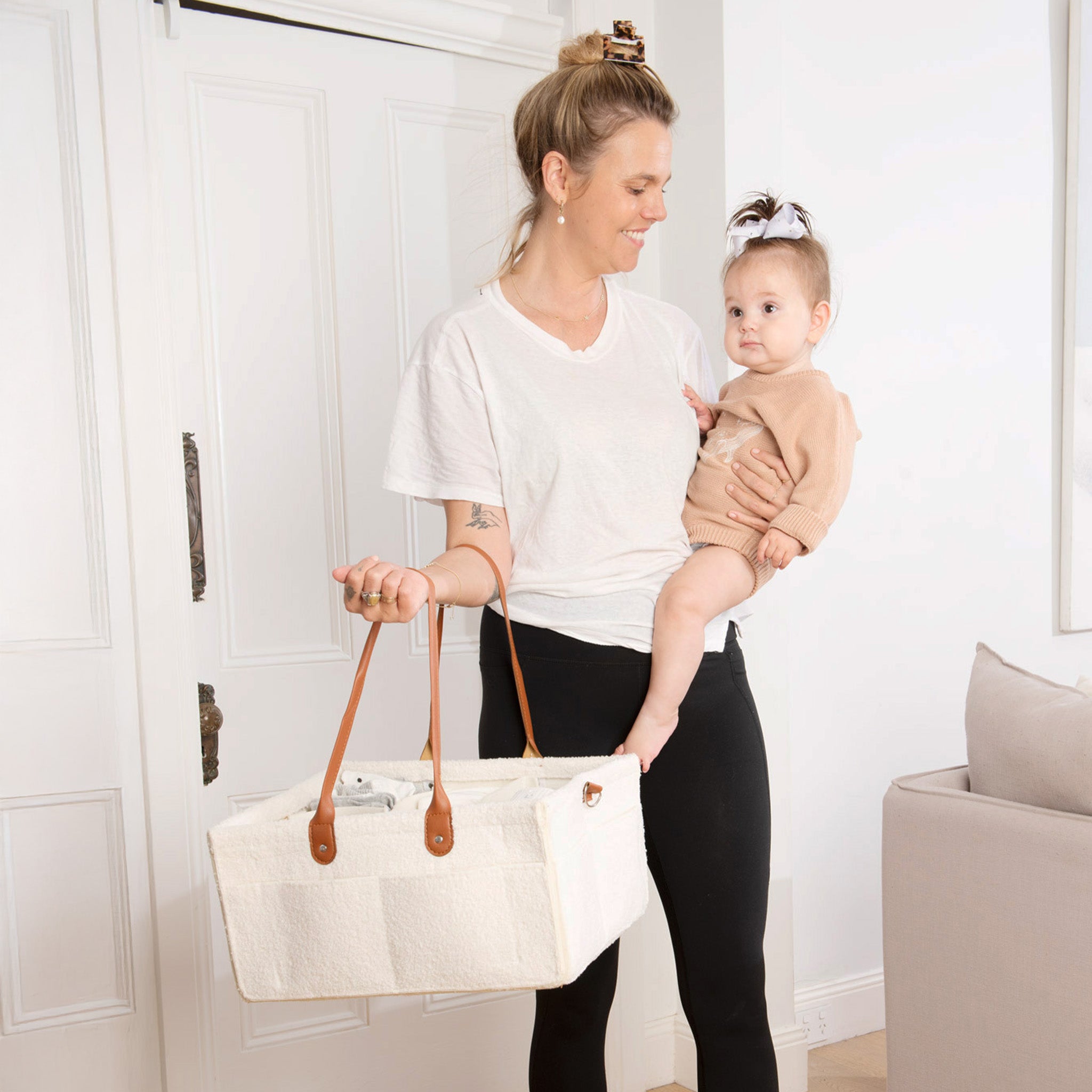Some babies (let's call them 'magical unicorns') will happily switch between breast and bottle with nary a whimper. So long as the milk is a-flowing, they'll be happy campers. We suspect that these may be the very same babies who sleep through the night from birth and happily put themselves to bed at nap time.
The rest of the baby population are not so free and easy. They will often refuse to accept anything other than their beloved boobie. And should you try and mess with the routine, they'll object. Loudly and angrily.
So what's a mama to do if she wants or needs to introduce a bottle? We're sharing our top tips and tricks to make the process less of a pain.
All about the boob, bout the boob no bottle
When should you start thinking about a bottle? Young babies tend to be a little less selective (some might say 'picky') than their older peers. It's generally thought that there's an ideal window for introducing a bottle around the 8-10 week mark.
Lactation experts recommend waiting till then as breastfeeding is usually established and any issues with latching/attachment, milk supply or other concerns have been worked through. The last thing you want to do is add yet another thing to manage if you're already working through some issues.
It's best to wait until you're breastfeeding confidently and have the time and mental capacity to try something new.
How to gently introduce the bottle
If breastfeeding is going well and you want to try a bottle there are some steps you can try to help you ease the process.
- Give the bottle at the end of a feed to start with, as a satisfied baby will be more likely to try the new teat sensation.
- Brush their lips gently with the teat in order to stimulate the rooting reflex and allow them to explore the teat. It feels and smells very different to you and may take some time to get used to.
- Bottles often have a faster flow than the breast so make sure you give your baby plenty of rests if they need it and use a slow flow teat.
- There are many different styles of bottles and teats and you may need to try several before finding one that you and your baby like.
- Don’t be discouraged if it takes a while or if your baby rejects the bottle initially.
- Sometimes it helps if someone other than mum gives the first few bottles as it can be confusing for bub if breasts are so tantalisingly close, but not being offered.
Breast milk or formula?
This is a HUGELY personal decision and one which is completely up to you! Some mums find it really tricky to express milk and prefer the convenience of formula while others like to keep their baby solely on breastmilk.
If you're thinking you'd like to try expressed milk in a bottle, make sure you check out the Haakaaa Silicone Breast Pump. Haakaa makes it a million times easier to create a milk stash quickly, effectively and, most importantly, effortlessly.
What about bottle preference/nipple confusion?
There is A LOT of talk in the breastfeeding world about bottle preference or nipple confusion; where a baby decides they actually prefer bottle feeding to the breast. This can be understandably heartbreaking and one of the reasons many mamas are super cautious about introducing a bottle.
There is no definitive hard and fast rule for why some bubs will develop a bottle preference as many factors can contribute. That being said however, it's more likely for a baby who is having a bottle daily to develop a preference than for a baby who might have the odd couple of bottles each month.
If you want to try a bottle, IBCLC The Milk Meg has the following tips to encourage your baby to continue breastfeeding happily:
- Make sure you use a bottle nipple with the slowest flow as this will help encourage your baby to really work hard to get the milk out. This makes it more similar to breastfeeding and less of a passive activity.
- Try to use the “paced bottle feeding” method.
Paced Bottle Feeding a Breastfed Baby
(Adapted from La Leche Leagues, "Bottle-Feeding a Breastfed Baby: Ideas for Day Care and Others")
By doing 'paced' bottle feeding you will prevent your baby from being overfed and taking in more milk than they need. While it is not possible to overfeed a baby who is breastfeeding, you can overfeed with a bottle. This is because less energy is exerted when bottle feeding and is a more passive activity than breastfeeding. More milk can go in more quickly without a baby realising they are full. It's also important to prevent overfeeding if only one or to bottles are being given while the mother is out for a short time. This way baby will be more likely to feed right when the mother returns and can help protect the breastfeeding relationship.
Offer your baby a bottle when they show signs of hunger, not by following a set schedule. Try to watch your baby, not the clock. Have your baby sit in a more upright position rather than lying down flat on their back. Put the nipple to your baby's lips and wait for them to show signs that they are interested.
Every few minutes take the bottle out of your baby's mouth, sit them upright or put them over your shoulder and burp them for 5-10 seconds. Offer the bottle again by putting the nipple to your baby's mouth and allowing them to show signs they do want to take it. Once your baby has had enough (don't force them to finish the bottle as they may not want the whole thing) then you can take the bottle out of your baby's mouth and burp them again.
Try not to give a baby a full bottle if you know the mother will be returning very soon. This way the baby will be hungry and more likely to accept the breast when the mother returns.
By Meg Nagle, International Board Certified Lactation Consultant
The Milk Meg
- Always start by trying the breast first. If your baby is very hungry and unsettled then you can offer the bottle first until your baby settles, then offer the breast.
- Hold your baby A LOT! This will encourage frequent breastfeeds and help keep your baby settled.
- Be skin to skin with your baby, 24/7 as MUCH AS POSSIBLE in the early weeks and months. As simple as this sounds, it’s the most important way to help keep your baby interested in the breast.
When they're just not that into it
Sometimes, despite your best laid plans, your bub just won't be a fan of the bottle. There are a few things you can try in this instance:
- Persist - it can take time for your baby to get the hang of drinking from a bottle. Continuing to offer, especially if you're able to get your partner or someone else you trust to do so might just end in success.
- Try a sippy cup - depending on the age of your little one, you may just be able to go straight to a sippy or straw cup. Some older babies and toddlers prefer the shape and flow of a sippy to a bottle.
- Give a nipple shield a go - If you really want or need your bub to take a bottle, a breastfeeding nipple shield may help. These Haakaa shields help bridge the gap between breast and bottle which can help with bubs who are used to one or the other.

